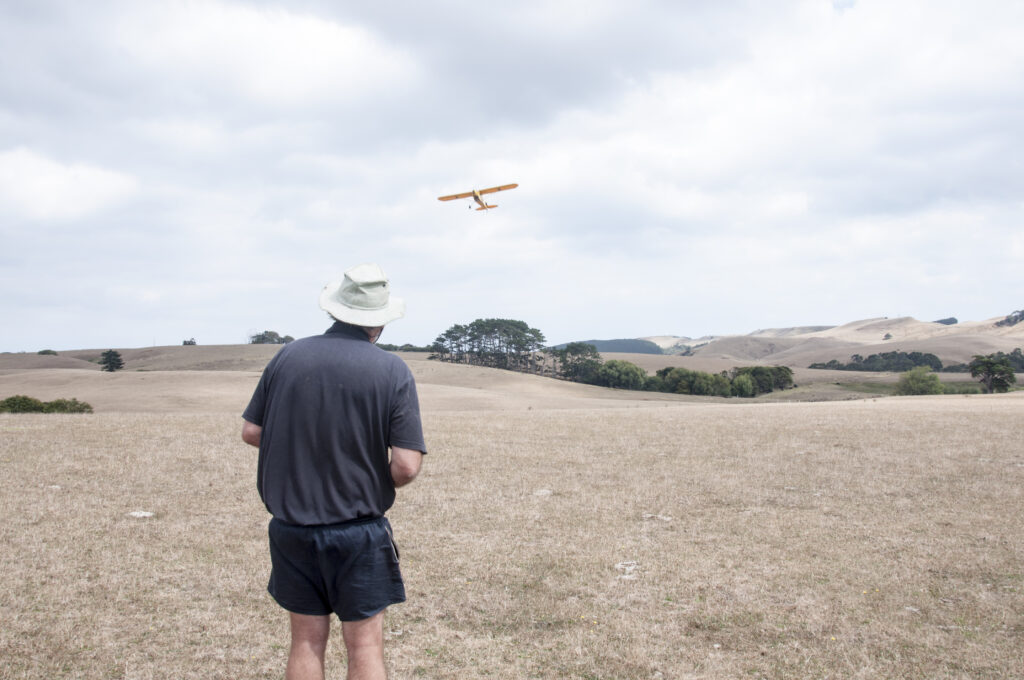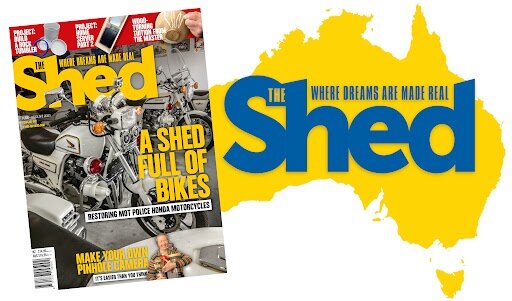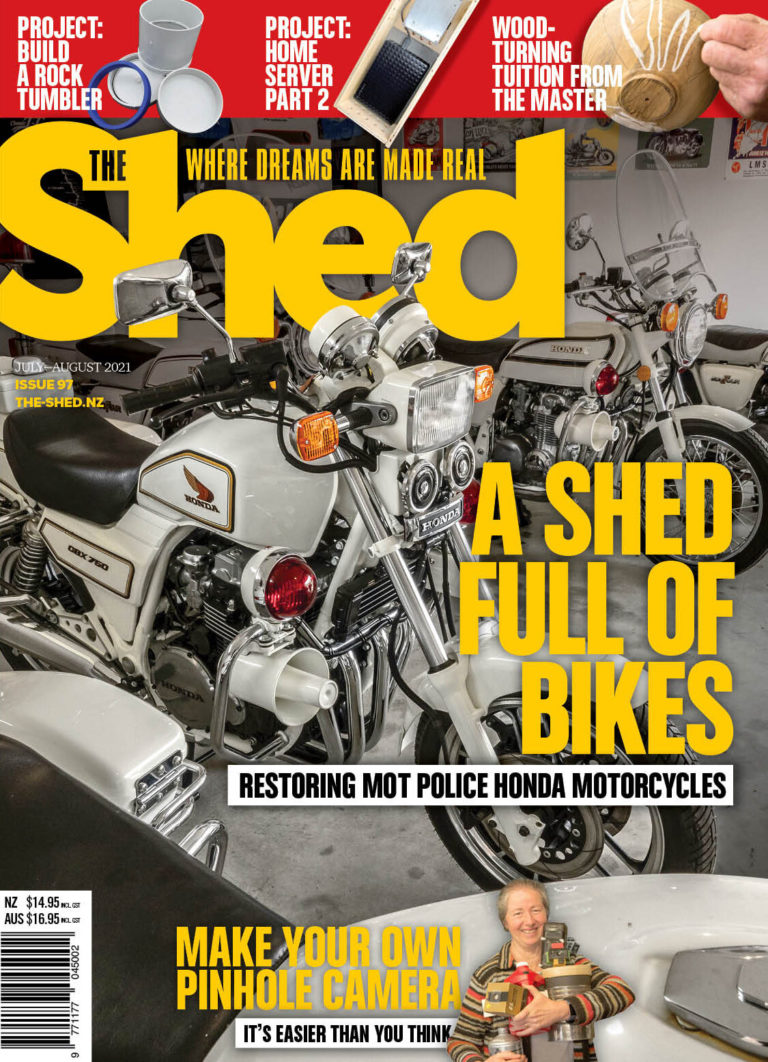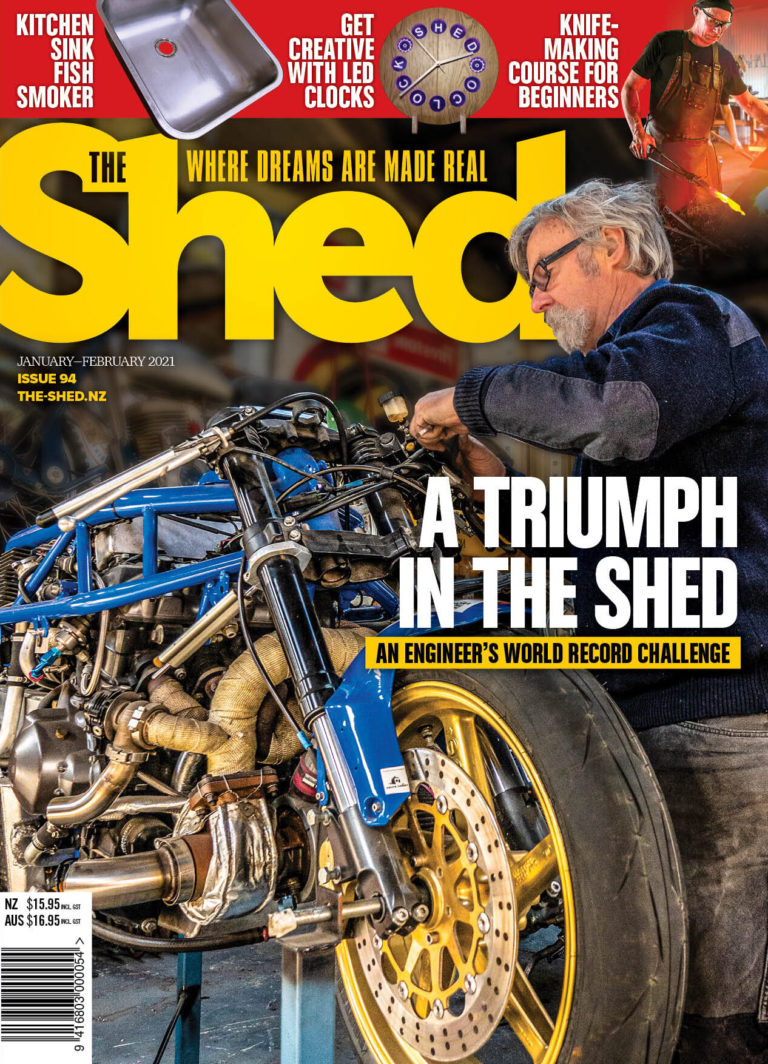A fan and the joys of making and flying
By Rod Kane
Photographs: Rod Kane, Jude Woodside


For many of us, the day we retire from work is the day we want to go out, have a bit of fun and do other things. In my case that day coincided with my first day at work. However, it was necessary to waste a bit of life to get to the end point.
Model building is something you can start well before the day of retirement and can carry on with right up until you lose the skills needed or you lose interest. It is very kind to retirees. In fact, many of us as kid had it for a hobby and went back in later years. It is also interesting to see real-life commercial pilots flying radio-controlled aircraft; I guess it’s a little easier to do loops and wingovers without 300 people on board. But everywhere there are guys producing amazing models, boats, aircraft, steam locos and machinery or whatever.






Building, flying
Over boats, cars, trains and everything else in scale-model construction, I have chosen aircraft. Flying is super-exciting and heart-stopping…for everyone. My flying skills move between non-existent and highly incompetent, but I manage to get by. I enjoy the winter days and summer nights in my workshop building them, either from a kit or from scratch from a plan. In summer, during the better flying months, I repair the ones that partly survive.
The first thing you need is a workshop, preferably with enough stud height to hang the planes up. You need plenty of light and you can’t have enough work benches. I have miles of small tools, all available from the big hardware stores, and I use a small drill press, bandsaw, coping saw, belt and disc combo sander, plus the various drills, rotary tools etc.
You will need a lot of small aircraft supplies like fuel tanks, tubing , servos, engines, glues, wiring, millions of fasteners but can get them just as you need them.
You can buy ARF (Almost Ready to Fly) aircraft online or in a store. These generally have a one-metre to two-metre wingspan and come in almost indestructible foam or quite destructible balsa/ply construction and film covering. They both look good and have a similar cost but if you are a scale builder you will build the balsa one.


Balsa
Balsa models come almost pre-built and you assemble them. They look great, it gets you in the air quickly at minimal cost and if you damage one you won’t wind up in tears over months of lost work. There are internal combustion engines in glow fuel or petrol and now many electric-powered aircraft. Each type has its pros and cons, but generally younger guys like the convenience, silence and ease of electrics.
We older guys go for hellfire and brimstone, tuning engines, noise, smoke and oil. It’s a bit like steam and electrics will never have the romance of anything firing a piston up and down. Turbines are big too. We have a guy in the club that flies a vampire jet and to hear this thing wind up and charge down the field flat out on takeoff you would swear it was the real thing.
You can put together an ARF plane in about three days. Everything is pre-built and they come with finished fuselage and wings, all hardware such as tanks, undercarriage etc but do require you to glue the main components together and fit the undercarriage, the fuel system, then add your own engine/s and radio gear. They look good, are not expensive and a trainer version of these is the way to start into the hobby.

Kit
Kit planes are a favourite of mine. Some manufacturers still do new kits and you can buy old kits from auction sites every now and again. They come in a box which contains the plans of the aircraft, all the balsa, the hardware and a good book of instructions (well worth following to avoid getting the build wrong). You usually have to buy all the gear that you do for an ARF plane, but also the covering, glue, paint if you are painting it etc.
These can take months to construct but it is a most satisfying way to build a plane because someone else has die-cut or laser-cut the ribs and bulkheads, which saves time and is far more accurate than you are likely to achieve with transferring drawings into a shape.
If you have patience, an eye for detail and can master building in balsa with a bit of soldering and wiring thrown in, you have a hobby that not only exercises diverse skills but is extremely satisfying at each completed stage of the build. The finished product should look, and fly, like the real thing.

Scratch build
Then there are scratch builds. You buy plans and perhaps the vacuum-formed canopy, turrets, engine nacelles etc, and everything else you buy and build yourself. This is very detailed and it takes a lot of time, a lot of patience and a good store of building/fitting-out materials. This is where you will find the truly amazing builds.
At the moment I am building a 109-inch (9 foot 1 inch or 2.7 metre) wingspan Consolidated PBY Catalina and it is not until you construct something like that, that you can appreciate the beauty and thinking behind the original design. I have just received the plans for a 134-inch (12 foot 10 inch or 3.4 metre) wingspan Lancaster bomber. This is a monster with four engines, working bomb doors, turrets and all that. I am getting flying lessons for our cat and I somehow have to break the news to the wife that I need all our money and a bigger workshop.

Glues
Model-building tools and materials have not progressed as much as electronics. We have excellent low-cost electric tools—band-saws etc—but most of the improvements have been in the glues we use, covering materials and that sort of thing.
You need to take all the usual common sense precautions when using tools and glues in particular. Modern cyanoacrylate (CA) glues bond instantly. Not only can they cause allergic reactions but if you get some on you and touch something you will need to give it a name because it will be part of you for life. You need to constantly clean up after yourself because you can very quickly become knee-deep in shavings and spend all day looking for whatever it was you just put down.

Big models
A good-sized scale model looks magnificent. Warbirds are particularly popular along with light transport like the J3 Cub, Cessnas etc. I do not fly the big models I build that take months or years of hard, dedicated work, but I build them to a standard where they could be flown easily enough. It’s like the guy that has a boat in the shed that he never uses; he admires it and knows he could use it if he wanted to…but he avoids the drowning component.
The iconic Supermarine Spitfire in any marque is a perennial favourite. I do not think a more graceful and beautiful piece of machinery of any type has been invented. It was also devastatingly lethal in its execution of duty. It never fails to amaze me that while Reginald J Mitchell was designing his beautiful creation and masterpiece at Supermarine, someone else was over in the Ford factory at the same time designing the unlovely Ford Ten.

Flying
Spending time out at the airfield with a model aircraft is very sociable. The satisfaction in seeing something you built taking off is immense. You can fly small park-flyers in parks, but if you want to get into the serious stuff, with noisy internal combustion engines, bigger planes etc, you must join one of the many excellent flying clubs. Take a couple of seats and lunch and you have a recipe for a very pleasant day.
Clubs have registered airfields which are usually a friendly farmer’s paddock or an un-used airfield; everyone has to be registered and that comes with insurance and rules. There have to be rules—some of these planes weigh many kgs and travel very quickly so the potential for accidents could be high without them.
Most clubs cater for one or more of the special interest groups, which could be scale-flying, racing, stunt, gliding, rubber power, vintage, large planes (these are huge) or just a club for guys to have a day enjoying their models. There is always someone to call on for advice if you need help starting out. It makes for a very pleasant escape out into the fresh air with like-minded people and there will always someone having a bad day that could be worse than yours.
But I do notice that whenever I take my planes out, other guys move their cars closer to the fence. There is shallow coughing and a deep muttering in the air. A good day for me is a few flights where I can re-use the planes with perhaps some repairs during the week. A bad day will see me stripping off anything useful and firing the rest of it into the incinerator. You get the picture.

Spectators
It is great to watch the others fly and we always get passing motorists stopping at the side of the road and watching with their families. This is very definitely a spectator sport.
With electronic technology these days, you can bind your transmitter to someone else’s and they can get you in the air and watch over progress, just like a dual-control car. Your plane will fly well out of visual range long before the transmitter loses any connection with it, such is their power. When that happens and you don’t regain control, you will have a pile of matchwood to collect. I have proved this concept quite a few times.
I must add that the average person, once having got used to flying, finds that it is a piece of cake and you do not forget the basics, a little like riding a bike. I manage to fall off that too.
As far as pricing goes, the sky is the limit here, but you can get into the air in an afternoon for about $300 to $400, more or less. From there, you can spend anything you like. Some guys must have some extremely understanding partners or keep them locked in a small room well away from the workshop windows.
It’s a great hobby.

Clubs
Aeromodelling in Australia is followed by more than 10,000 enthusiasts who are affiliated to the Model Aeronautical Association of Australia (MAAA) through member clubs from the State associations. For example, in Queensland there are more than 2400 members and 60 affiliated clubs in the Model Aeronautical Association of Queensland. Those interested in model aircraft construction and flying can find out about a local club from this page on the MAAA website. http://www.maaa.asn.au
In New Zealand, interested fans can contact fellow model aircraft enthusiasts through the 74 clubs listed on the website of Model Flying New Zealand, which until 2008 was the New Zealand Model Aeronautical Association (NZMAA).
https://www.mfnz.org/members-pilots/clubs/



